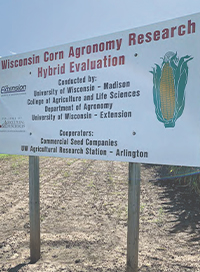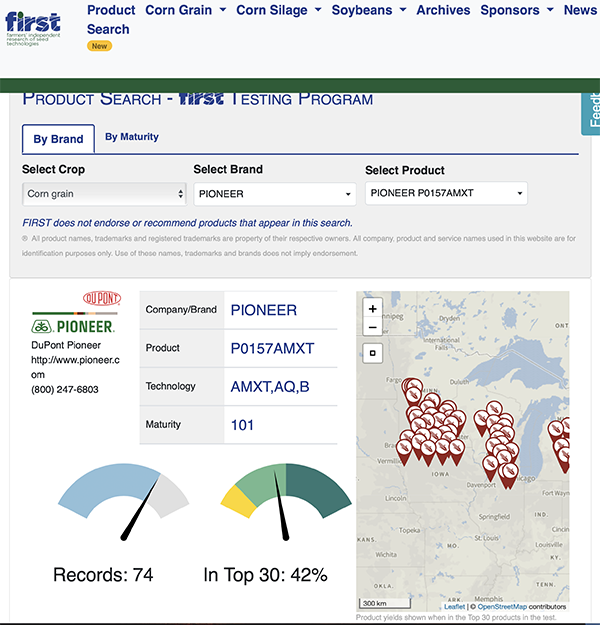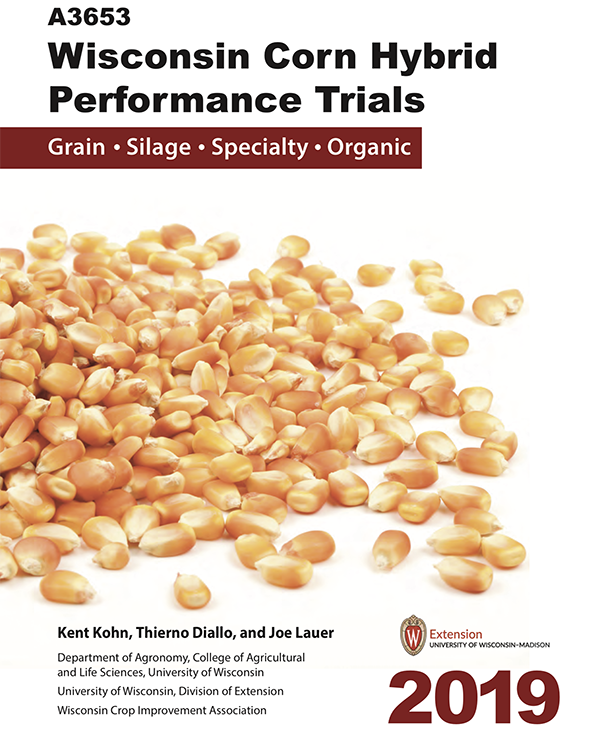 Selecting the right corn hybrids is crucial to optimize yield and potential returns on every acre. In many cases, the decision can be the difference between a profit and loss. Studying test plot data is just one step you can take to make the best decisions. Use these nine tips to help you choose the right corn hybrids.
Selecting the right corn hybrids is crucial to optimize yield and potential returns on every acre. In many cases, the decision can be the difference between a profit and loss. Studying test plot data is just one step you can take to make the best decisions. Use these nine tips to help you choose the right corn hybrids.
1.Think Multiples
“The absolute best way to find the best hybrids for your area is to find multilocation data of hybrids across a broad array of environments,” says Joe Lauer, agronomist for the University of Wisconsin-Madison Division of Extension. On-farm trials are fine as a learning tool, but basing decisions on one location in one environment over one year is risky.

Lauer says to seek out seed plot research that conducts multilocation tests, which is best accomplished with the same set of hybrids. University research and groups like Farmers’ Independent Research of Seed Technologies (FIRST) use this method.
FIRST’s founder and general manager, Kevin Coey, says it began trials 24 years ago when Roundup Ready® corn was first commercially launched to check whether transgenic traits impacted yield. “As it turns out, seed companies have been very successful in introducing genetically engineered traits without a yield lag or drag today,” he says. FIRST tests around 60 to 100 seed options that are replicated over six environments in a region about 10 to 12 counties in size. It has 37 corn and 31 soybean regions across 15 states.
Coey, also a believer in multilocation test results, has launched a new product search tool (by brand name or maturity) with interactive maps of trials, yield and location data, such as planting date, tillage and soil texture. “We aim to help growers find hybrids that are well-adapted to their area and deliver consistent performance over various trials," he explains.
2. Focus on Consistent Performance
Finding such consistency of performance is Lauer’s second tip when selecting hybrids, along with learning why they succeed or fail in specific trials. “Our research shows that if you take the top 20% of hybrids over a multi-location data area, then grow those hybrids next year, you will beat the trial average 72% of the time,” Lauer says.
3. Know Importance of Seed Cost Value
The University of Wisconsin, like many universities across the Corn Belt, conducts annual hybrid and variety trials, replicated in numerous locations. Lauer has been involved in this project for many years and likes to talk about the value of data from these trials, especially when it comes to his third tip — know the importance of seed cost value.

When looking at trial data on average, Lauer says there’s a 70-bushel yield difference between the top and bottom hybrids. “When you try to predict next year’s production, and you choose to grow the top hybrids and compare that to the average in the trial, the average gain is 9 to 11 bushels. That 10 bushels, multiplied by $3 or $4 corn and 2 acres per bag, means that whenever a hybrid costs $60 to $80 more, it becomes difficult to justify the more expensive hybrid,” he says.
4. Study Individual Performance
Lauer stresses you should buy hybrids based on individual performance, not the genetic family’s performance. His reasoning is those bioengineered traits, sometimes involving up to 36 transgenes, will interact with the underlying germplasm. “We’ve seen up to a 30-bushel difference between hybrids in the same family of genetics — sometimes positive, sometimes negative. If the hybrid delivered isn’t exactly what you ordered, but in the same family, I would reject it,” he says.
5. Buy Only the Traits You Need
This can be a challenge, as more traits are packaged and you can’t just switch in and out of traits very easily, Lauer adds. “If you don’t need it, why buy it?” he asks.
6. Maturity Range Matters
Lauer believes that varying hybrid maturity to mitigate risk can cost you bushels. “The best yield potential is always with full-season hybrids. In our trials, we see that every relative maturity unit equals a 2-bushel change, on average. So, the difference between a 90- and 100-day hybrid is 20 bushels, which can mean the difference between profit and loss plus extra drying costs,” he says.
7. Examine Economic Plant Population
“What we see is you max out yield at about 39,000 plants per acre (30-inch rows) and max out economic optimum at 35,000,” Lauer says. “What I tell growers is to plant a field to the population you believe is best (i.e., 30,000 plants/A) and for one round increase the population 10% (i.e. 33,000 plants/A) and see if you can find a change on your yield map.”
8. Rethink Row Width Changes
Does it pay to narrow rows? Lauer points out row spacing doesn’t improve yield that much. The difference in yield between 30-inch rows and 15- or 20-inch rows is only 3% on average. With most growers still on 30-inch corn, it’s probably not worth spending time (or the expense) for 3%, unless you have everything else worked out. Lauer admits that if he could move his whole research program to one row spacing, it would be 20-inch rows.
9. Learn From Field Days
Even though you can’t get yield data at a field day, you can kick the tires (stalks) to learn and compare pest resistance, stalk strength, ear retention, drydown and other characteristics among hybrids. “While you can’t see everything that happens after the crop matures — that critical period between blacklayer and harvest — you can maybe see something that has occurred up to that point and how the crop dealt with the issue,” he says.
Coey adds that field days are a good time to ask the agronomist or plant breeder about future products and how the company is preparing to deliver genetic improvements. Finding a good, trustworthy resource to help sort through all the genetic characteristics and bioengineered traits can help immensely.
“And when the conversation turns to seed costs, a discussion of net earnings from new hybrids can be invaluable to learn,” he says.
More Information From University Trial Data
- University of Illinois
- Iowa State University
- Kansas State University
- Michigan State University
- University of Minnesota
- University of Missouri
- University of Nebraska
- North Dakota State University
- South Dakota State University
Content provided by DTN/Progressive Farmer
™ ®Roundup Ready is a registered trademark of Monsanto Technology LLC. Always follow IRM, grain marketing and all other stewardship practices and pesticide label directions. Roundup Ready® crops contain genes that confer tolerance to glyphosate herbicides. Glyphosate herbicides will kill crops that are not tolerant to glyphosate. B.t. products may not yet be registered in all states. Check with your seed representative for the registration status in your state.
The More You Grow
Find expert insights on agronomics, crop protection, farm operations and more.